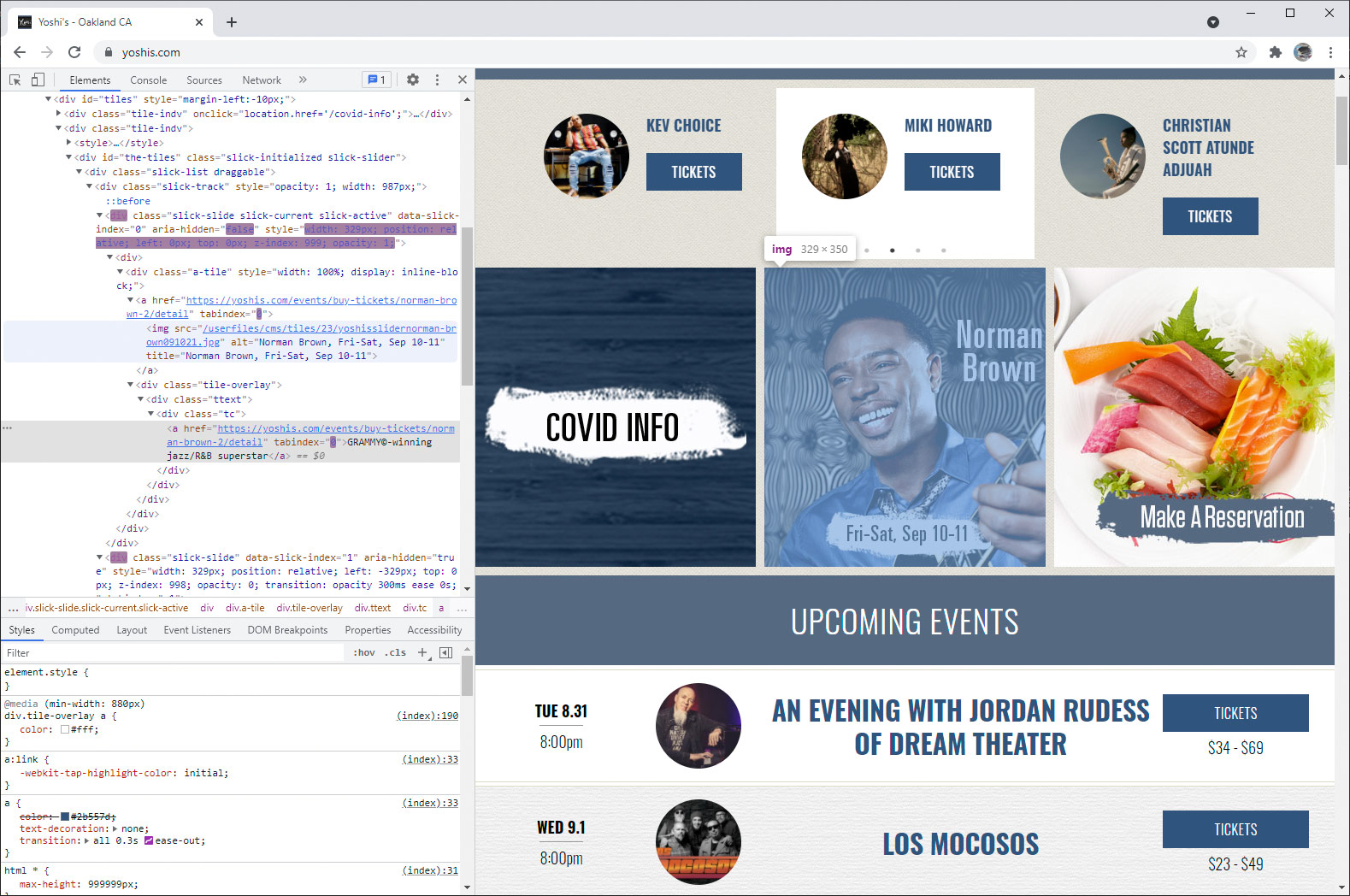Every day public buildings, homes, and businesses are designed or modified to be ADA (Americans with Disabilities Act) compliant. Modeled after the Civil Rights Act of 1964, the ADA protects people with disabilities by ensuring equal access to public spaces, services, and employment opportunities. Click here to learn more about the ADA via ada.gov.
A need for web accessibility
ADA compliance for physical access and employment opportunities has increased through the years, the same cannot be said for digital accessibility. Although Web Content Accessibility Guidelines (WCAG) were first published in 1999, businesses and institutions have been slow to adopt the standards. In the age of 'online everything' where people rely on the internet for education, research, and access to products and services – the lack of digital inclusivity is alarming.
Webaim, a leading provider of web accessibility solutions, recently conducted an accessibility analysis of the top 1,000,000 home pages and found that 97.4% were not WCAG 2 compliant. Click here to access the full report.
As new assistive technologies like screen readers, magnifiers, and braille displays have emerged, people with disabilities now have tools to access the internet more efficiently. However, the websites they visit need to be ADA compliant for the accessibility solutions to work well. Click here to learn more about assistive technologies via bighack.org.
The need for accessibility continues to grow. The World Health Organization (WHO) cited that more than 1 billion people live with some form of disability.
Over 1 billion people are estimated to live with some form of disability. This corresponds to about 15% of the world's population, with up to 190 million (3.8%) people aged 15 years and older having significant difficulties in functioning, often requiring healthcare services. The number of people living with disabilities is increasing, in part due to aging populations and an increase in chronic health conditions. Click here to visit WHO for more information.
Divergent perceptions
Perception and reality can be two different things, especially when it comes to interpreting the experiences of others. The 2021 survey from Webaim illustrates the divergent perceptions of disabled and non-disabled people regarding the progress of website accessibility.
"Perception of the state of web accessibility has generally not changed in recent years. Respondents without disabilities tend to be more positive about recent progress (47.4% thought it has become more accessible) than those with disabilities (38.6% thought it has become more accessible)." Click here to access the Webaim survey.
As telling as the Webaim stats may be, many businesses still balk at the added expense of designing and maintaining ADA-compliant websites, and the legal system is starting to notice.
The rise of ADA lawsuits
According to UsableNet, a leading digital accessibility company, web, app, and video accessibility lawsuit cases are rising. Not only are accessibility lawsuits being filed – they're winning.
"In 2020, web, app and video accessibility cases are up almost 25% year-on-year. December saw an almost 100% rise over January. Total digital accessibility lawsuits in 2020 exceeds 3,500. When you combine federal and state ADA lawsuits, the trend is moving upward." Click here to access the full article from usablenet.com.
Accessibility insight
As web designers and developers for more than 25 years, we have in-depth WCAG and ADA experience. Through the years, we've helped many clients optimize for ADA compliance, and we've also heard a lot of misconceptions. To help shed some light on the topic, here are a few things to keep in mind.
Audience types: It's important to know that the people who benefit from accessibility tools can have different types of disabilities that range in severity. For instance, not all people relying on these technologies are 100% blind; they may have low vision, be severely nearsighted, have cognitive or learning disabilities, be physically unable to use tools like a standard mouse or keyboard, or be deaf/hard of hearing. People of all ages and abilities deserve the opportunity to access public websites.
Crossover benefits: One of the great aspects of being ADA compliant is the crossover benefits you get from Search Engine Optimization (SEO). Search engines are like screen readers in that they read lines of code from top to bottom. Descriptive linking, alt text, content structure, and other ADA design items help boost search results while optimizing accessibility. It's a win-win for any brand.
ADA optimization and maintenance: There are two main phases for optimizing and maintaining web accessibility. First, a website is scanned and adjusted by a development/design firm specializing in ADA and WCAG. Then the site enters a maintenance phase for routine scanning and reviews to ensure ongoing compliance.
Things content creators can do to aid accessibility efforts
Alt text: Alternative text help provide image context for those using screen readers. Describing an image is also helpful for search engines, page indexing, and when a browser arent loading images. Click here to visit WebAim and learn how to use alt text correctly.

Descriptive linking: Many screen readers allow users to tab through links, which is extremely helpful, especially when navigating a page with many links. However, if every link is described the same way – i.e., 'click here,' the screen reader cannot convey to the user where the link would take them. Tip: Instead of linking to text that says 'click here,' describe where the link goes. For example, instead of 'click here' try 'click here to download a PDF for rules and regulations.' Description linking helps search engines index information, boost SEO, and serve those with accessibility needs.
Structuring content: Properly using header tags, like H1, H2, H3, also helps web accessibility and SEO indexing. Header tags work as a document outline and help structure content appropriately.
Golden Entertainment, Tracy McLaughlin, The Sharp Group, MARIS, and Darcoid are just a few of our most recent clients who have made a move towards ADA compliance.
Our Services
API Development Content CreationContent Management SystemDigital MarketingE-Commerce DevelopmentE-mail MarketingHostingIT ConsultingLead GenerationProject ManagementStrategic AdvisoryWebsite DesignWebsite DevelopmentWebsite Maintenance WordPress Management








